Android Custom View 102 (Part 16)
More on canvas transformations

In this post I want to go into details on canvas transformations, especially if we want to combine them.
Let’s take the simple example of translation + rotation. The end result is like this:
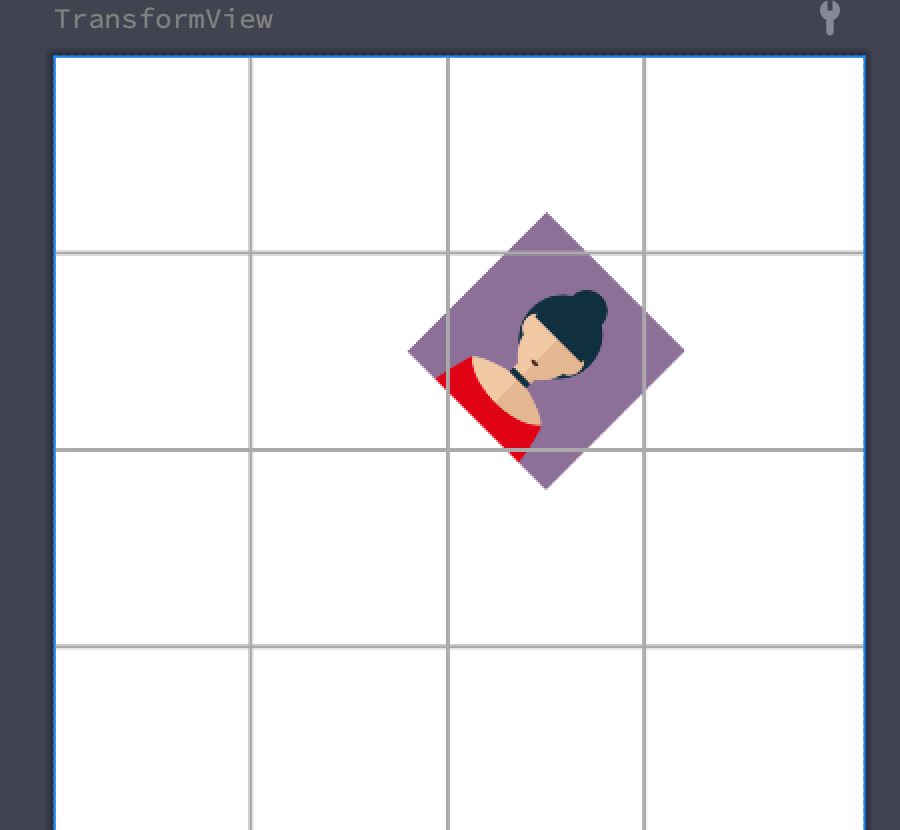
We can easily see that the image has been translated to (300, 200) and then rotated 45 degrees.
class TransformView @JvmOverloads constructor(
context: Context, attrs: AttributeSet? = null, defStyleAttr: Int = 0
) : View(context, attrs, defStyleAttr) {
private val paint = Paint(Paint.ANTI_ALIAS_FLAG)
private val image: Bitmap
private val imageSize = dp2px(100)
init {
image = getImage(dp2px(100).toInt())
}
override fun onDraw(canvas: Canvas) {
super.onDraw(canvas)
canvas.save()
canvas.translate(dp2px(200), dp2px(100))
canvas.rotate(45.0f, imageSize / 2, imageSize / 2)
canvas.drawBitmap(image, 0.0f, 0.0f, paint)
canvas.restore()
}
}This seems straightforward, first we translate the canvas and then rotate it and lastly draw image on it. But do we fully understand it really? Let’s try something else to test our understanding.
My friend Eva Luator argues that mathmatically, it doesn’t matter if we first translate and then rotate or first rotate and then translate. He even drawed some pictures to show me:
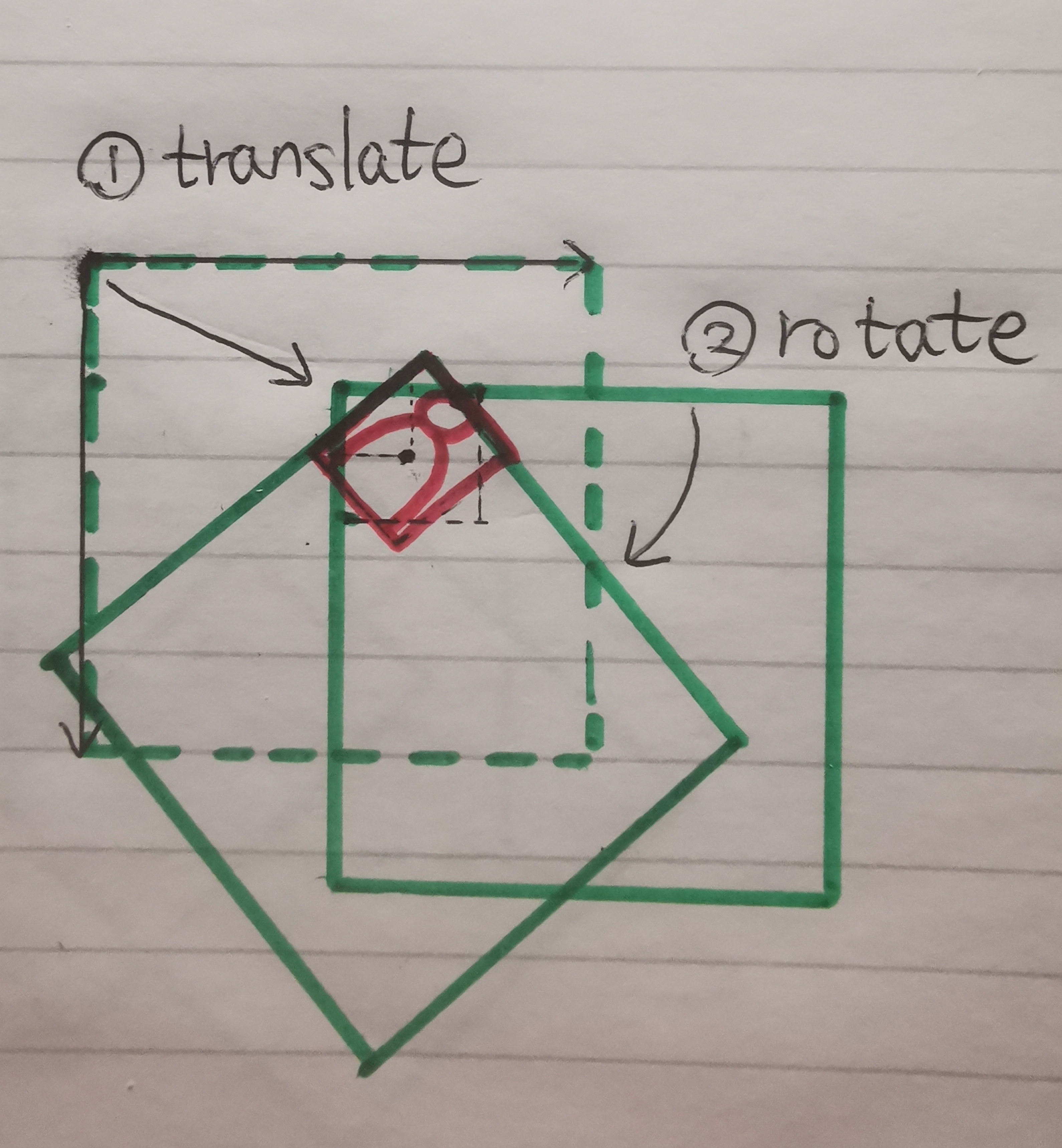
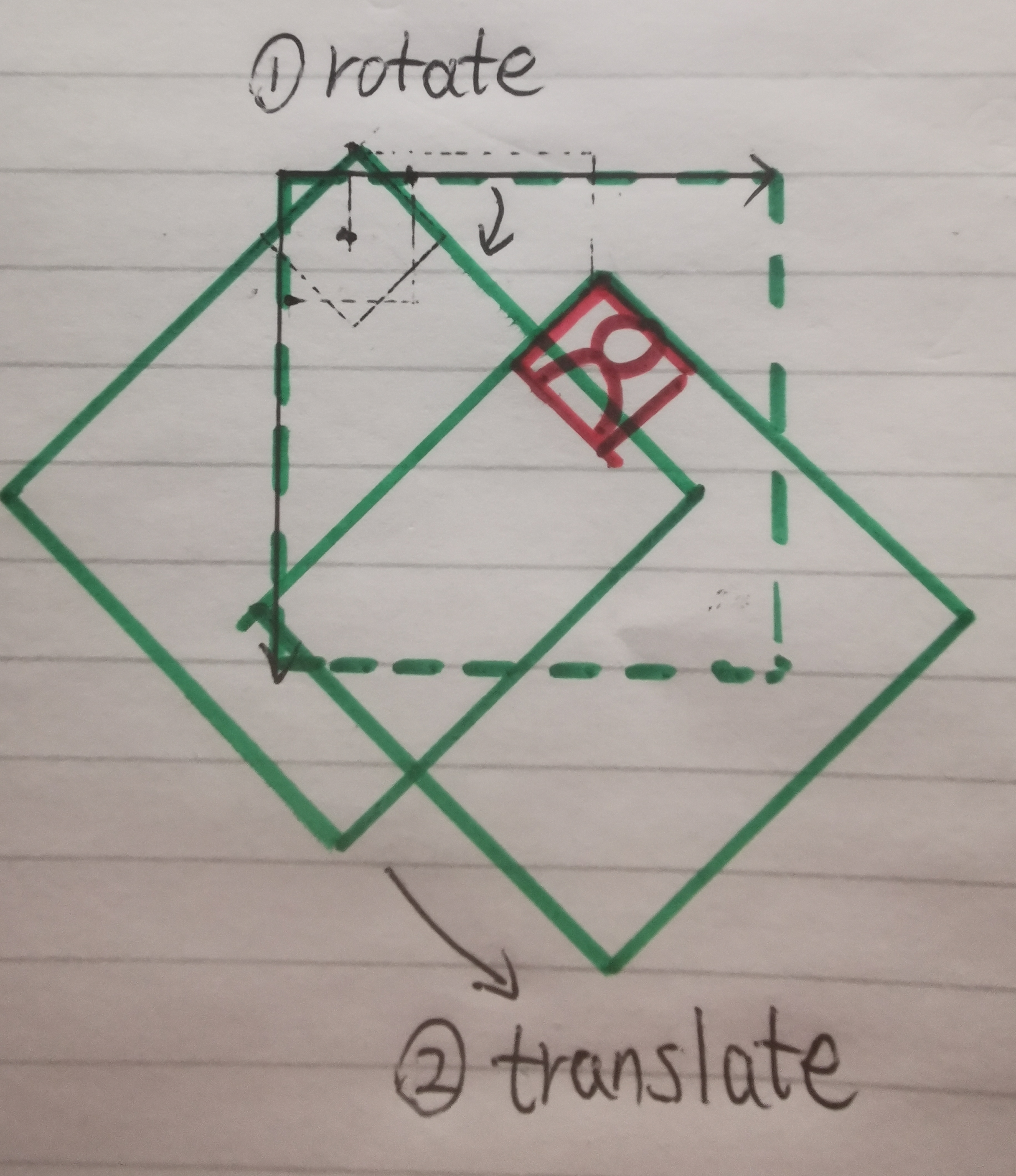
I said we can try it and here is the result:
override fun onDraw(canvas: Canvas) {
super.onDraw(canvas)
canvas.save()
cannvas.rotate(45.0f, imageSize / 2, imageSize / 2)
canvas.translate(dp2px(200), dp2px(100))
canvas.drawBitmap(image, 0.0f, 0.0f, paint)
canvas.restore()
}
}
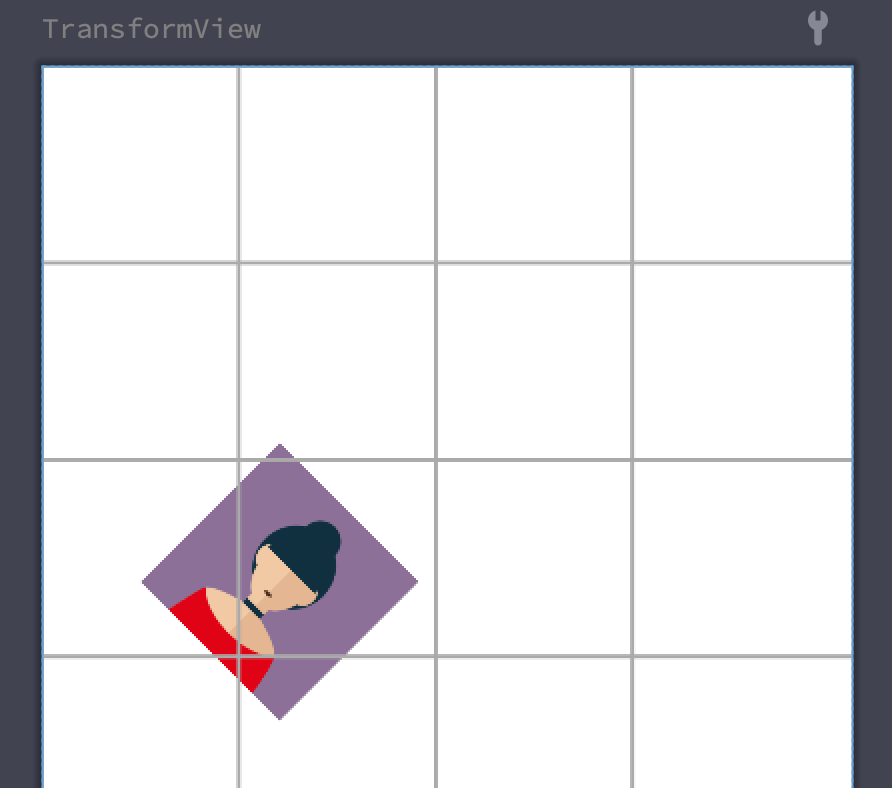
Uh-oh… not what we expected. But why?
The reason is that canvas transformations are continuous, meaning the latter transformation is done on the basis of the previous one.
Let me draw this for you:
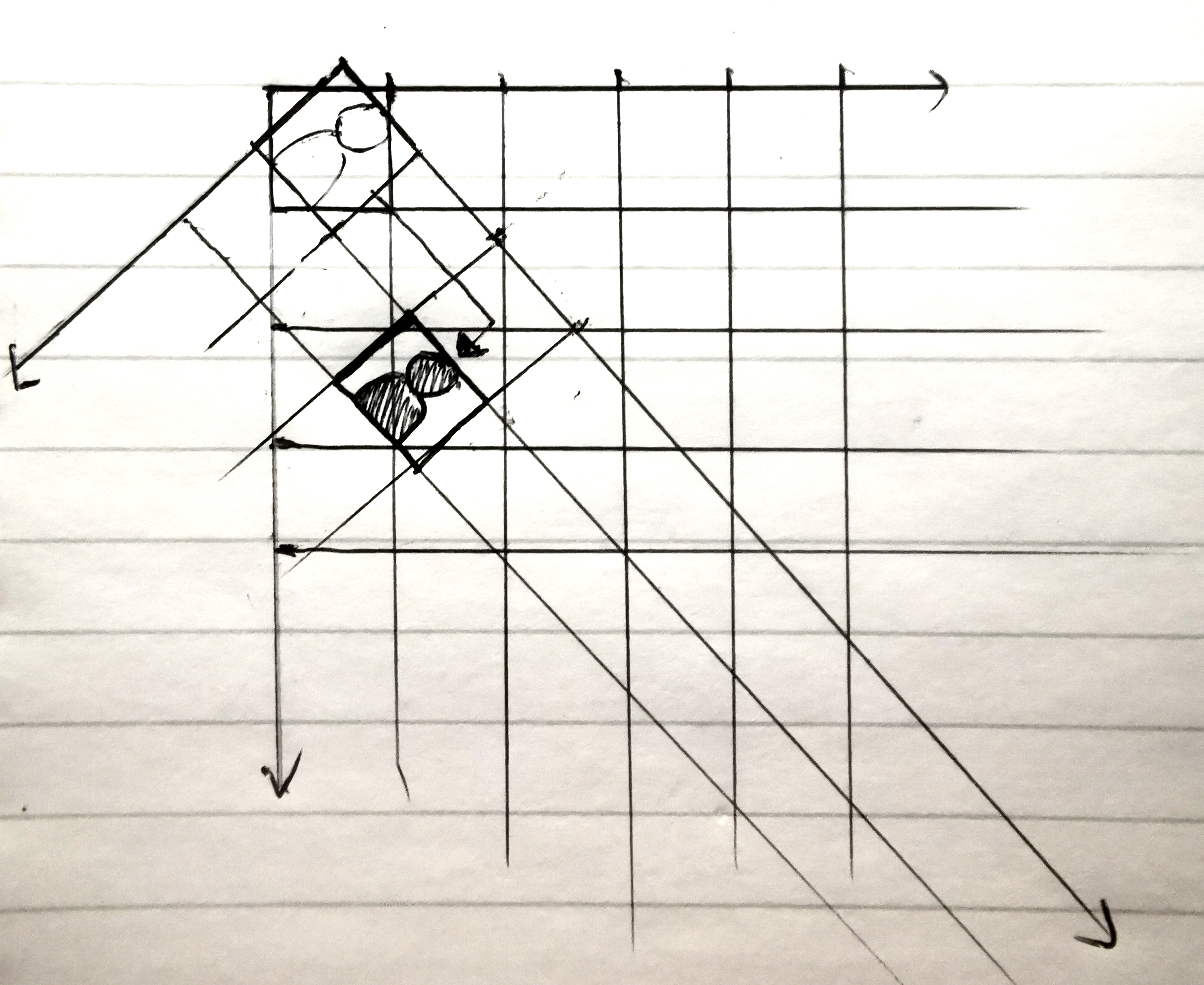
So this means that after each transformation, the coordinate system also changes, this can make things very complicated to for our minds.
Don’t worry, there is this one trick that can help you “fix” the coordinate system, but we have to do the transformations in reverse order. Let me explain how this works:
Note that from now on we only use the original View’s coordinate system.
What we want to do:
- Rotate 45 degrees, pivot point is (imageSize / 2, imageSize / 2)
- Translate to (200, 100)
Now pay attention, in code we have to reverse this order
override fun onDraw(canvas: Canvas) {
super.onDraw(canvas)
canvas.save()
canvas.translate(dp2px(200), dp2px(100))
cannvas.rotate(45.0f, imageSize / 2, imageSize / 2)
canvas.drawBitmap(image, 0.0f, 0.0f, paint)
canvas.restore()
}
}Or we can try to do it the other way around:
- Translate to (200, 100)
- Rotate 45 degrees, pivot point is (200 + imageSize / 2, 100 + imageSize / 2)
Translate this into code we get:
override fun onDraw(canvas: Canvas) {
super.onDraw(canvas)
canvas.save()
cannvas.rotate(45.0f, dp2px(200) + imageSize / 2, dp2px(100) + imageSize / 2)
canvas.translate(dp2px(200), dp2px(100))
canvas.drawBitmap(image, 0.0f, 0.0f, paint)
canvas.restore()
}
}Notice that the pivot point depends on where you want to do the rotation, after the translation or before.
And now you are a master of canvas transformations!

Twitter
Google+
Facebook
Reddit
LinkedIn
StumbleUpon
Email